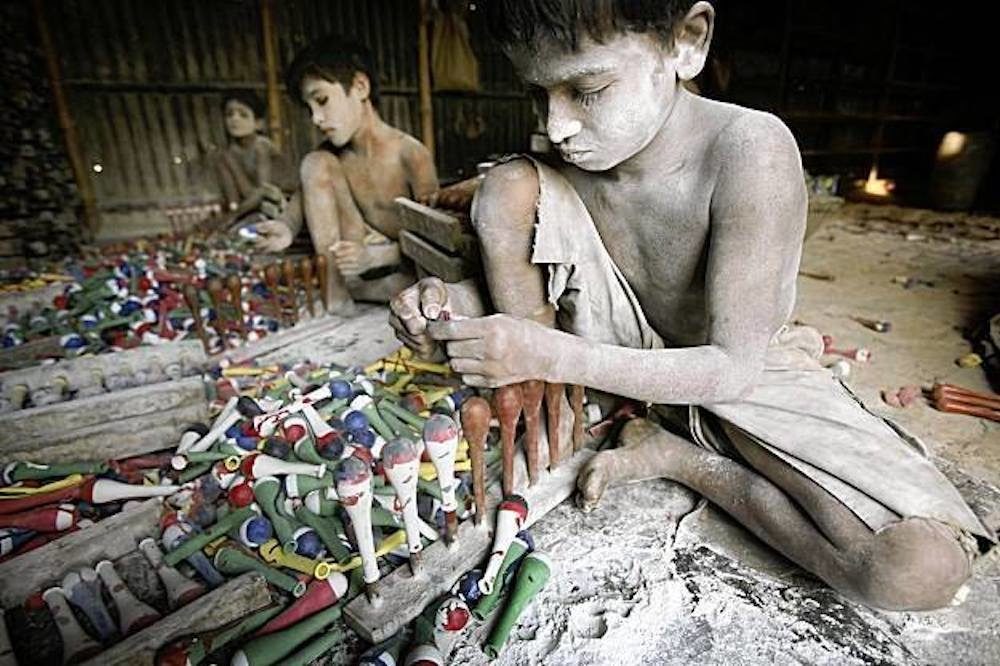Child Labor | Assignment Help
Introduction
Child labor is the crucial problem in global economy. Child labor means the employment of children below the minimum age fixed for working to the works those are hazardous for them physically, mentally or from moral perspective. Many multinational companies are accused of using child labor. In the following paragraphs we will study about the child labor facts, the major cause those are responsible for arising child labor and the corporate responsibilities of companies to remove child labor and fair treatment to children (Kolk,2002).
Navigate HTML complexities with ease through Assignmentstudio’s expert HTML Assignment Help. From basic tags to advanced concepts, our proficient team offers personalized assistance, ensuring your HTML assignments meet the highest standards of quality.
Global Business Ethical codes for use of Child Labor
According to the categories mentioned by ILO to define child labor there are 55 codes those are adopted against child labor by Multinational companies, International NGOs, International Organizations and business support groups ( Kolk 2002). These codes were related to the minimum age requirement, monitoring and sanctions. There are approximately 100 ethical codes those were selected by certain Multinational corporations to fulfil their corporate social responsibilities. We are going to study the three ethical conducts taken up by global businesses against the child labor (Kolk,2002).
Global Business Standards Codex is a benchmark for the companies those want to establish their own ethical codes of conduct (Wolfe et al, 2002) . These conducts are fiduciary, reliability, property, transparency, dignity, fairness, citizenship, and responsiveness. We will discuss three of them and these are
The Property Principle:
The property principle is concerned with the protection of child labors against any physical, mental or moral theft related to the property of the business. For example, any theft to any children from the work place or working conditions, machineries used in the company and from any operation which is physically hazardous for child (Gupta et al, 2009).
The Citizen Principle:
The citizen principle is related to the fulfilment of companies’ responsibilities as a citizen of the country and these principles include Laws & Regulations against child labour, civil contribution of businesses by formation of ethical conduct of avoiding child labor, cooperation with the authorities those are enforcing various rules against child labour. That means companies legal responsibilities against child labor (Wolfe et al, 2002).
The Fairness Principle
This principle is related to provision of fair wages to the labor so that they need not to involve their children to work at the age of schooling. It also includes the fair treatment to children and all the other labors, proper working conditions and fair dealing with the children. These ethical principles are not only concerned with the legal responsibilities but these comes under the social responsibilities of the global businesses (Gupta et al, 2009).
Child labor means employing children in any work that restrain children to attend regular school, and that is physically and mentally harmful for them. According to International Labor Organisation (ILO), the child labor is defined in three categories and these are:
- Child too young for type of work: When the children are too young to do the work that they are doing as per the standards established by international standards and national legislation. Generally the minimum age is set to 15 and 16 years. But developing countries choose to apply it at the age of 14 years and for light work from the age of 12 years.
- Hazardous work: Labor or work that is physically, mentally or morally harmful for wellbeing of children is known as dangerous or hazardous work.
- Unconditional worst forms of child labor: And the last category is the unconditional and illicit work like prostitution, pornography, slavery, etc.
So, according to International Labor Organisation (ILO), if a child is doing the hazardous or illicit work or the work he or she is doing for that they are too young then they are considered as child labor. The main cause of child labor according to ILO is poverty. Income of child is very important for the survival of impoverished households even if their income is very low. But still it is very important for their living (Wolfe et al, 2002). Sometimes child labor is necessity because of lack of resources like quality education and expensive and unaffordable schooling is also responsible for child doing hazardous work. Because of poverty poor people tries to save as much money as possible for their survival and they think education is waste of time and it is better for children to do work (Gupta et al, 2009) .
Empower your understanding of Causes and Prevention of Child Labor with Assignmentstudio. Through rigorous research and evidence-based insights, we advocate for effective strategies and collective action to protect children’s rights and eliminate exploitative labor practices.




